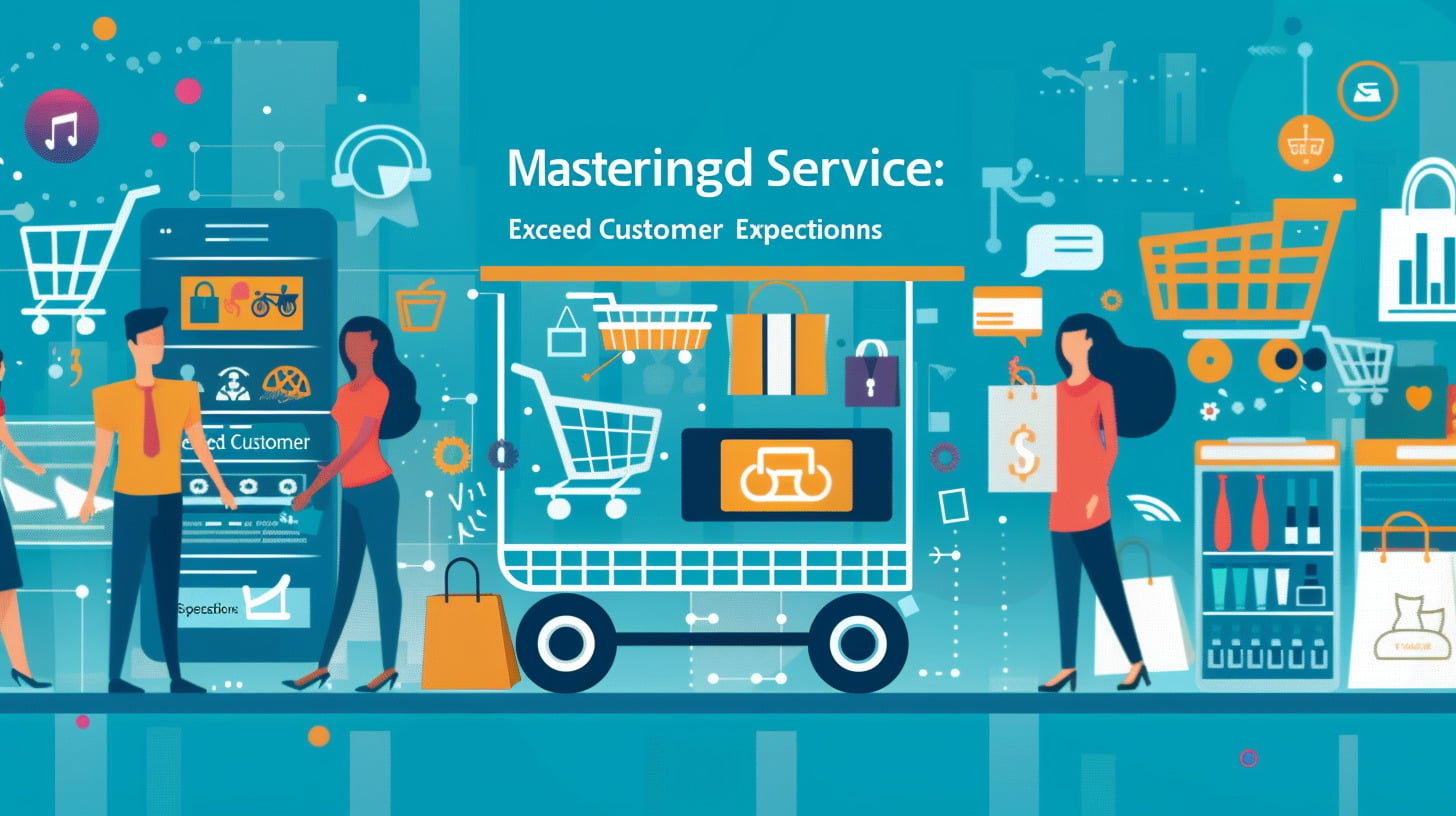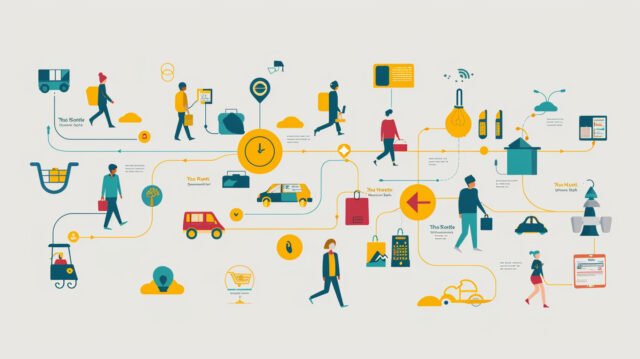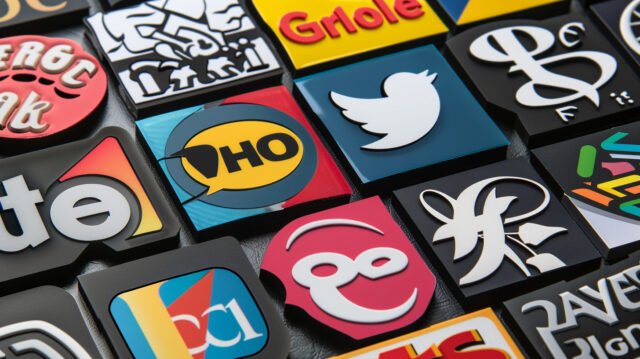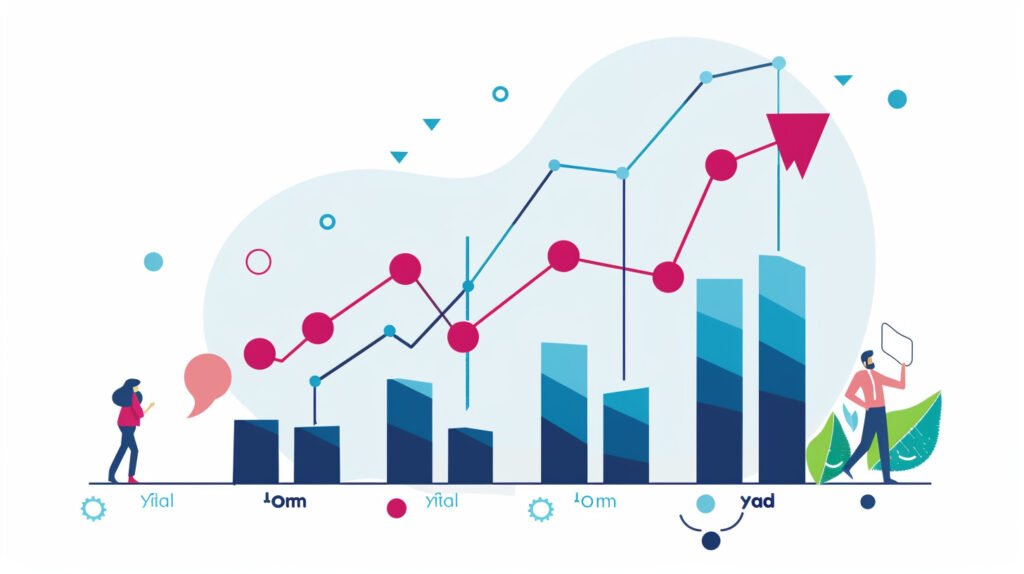
Mastering Personalized Service: Exceed Customer Expectations
Welcome to the era of the empowered consumer. Today’s customers have higher expectations than ever before. It’s no longer enough to simply offer a good product or service – you need to create an experience that leaves a lasting impression.
In this fast-paced, hyper-connected world, personalized service is the key to exceeding expectations and fostering unwavering customer loyalty. It’s about understanding your customers on a deeper level, anticipating their needs, and going above and beyond to make them feel valued and appreciated.
But what exactly is personalized service? It’s more than just using a customer’s name or sending them a birthday discount. It’s about tailoring every interaction to their unique preferences, needs, and history with your brand. It’s about creating a sense of connection and building a relationship that goes beyond a single transaction.
In this article, we’ll delve into the psychology of customer delight, explore innovative strategies for personalization, and share inspiring examples of businesses that are mastering the art of exceeding expectations. Whether you’re a small business owner or a seasoned marketing executive, you’ll discover actionable insights and practical tips to elevate your customer service game and drive lasting growth.
So, are you ready to embark on a journey to create unforgettable customer experiences? Let’s dive in!
The Psychology of Customer Delight

To truly exceed customer expectations, we need to understand the underlying psychology that drives customer delight. It’s not just about meeting their basic needs; it’s about creating an emotional connection that fosters loyalty and advocacy.
Beyond Satisfaction: The Power of Positive Emotions
While satisfaction is important, it’s often fleeting. To truly leave a lasting impression, businesses need to tap into positive emotions like joy, surprise, and gratitude. These emotions are more likely to be remembered and shared, creating a ripple effect that can significantly impact your brand’s reputation.
The Science of Delight: How Our Brains Respond to Exceptional Experiences
Research in behavioral economics and psychology has shed light on how our brains respond to positive experiences. The peak-end rule, for instance, suggests that we tend to remember the peak (most intense) and end moments of an experience more vividly than the overall duration. This means that even a small gesture of kindness or a personalized touch at the end of an interaction can leave a disproportionately positive impression.
Another concept, surprise reciprocity, refers to our natural inclination to reciprocate unexpected acts of kindness. When a business goes above and beyond, customers often feel compelled to return the favor through repeat purchases, positive reviews, or word-of-mouth recommendations.
The Business Case for Delight: Why It Pays to Invest in Positive Emotions
Investing in customer delight isn’t just about feel-good moments – it’s a smart business strategy. Research has consistently shown that delighted customers are more likely to become loyal advocates for your brand. They’re also more likely to spend more, forgive mistakes, and recommend your business to others.
By understanding the psychology behind customer delight, businesses can create more meaningful and impactful experiences that resonate with customers on a deeper level. This, in turn, can lead to increased customer lifetime value, stronger brand loyalty, and ultimately, sustainable growth.
Mastering the Art of Personalized Service

Now that we understand the psychology behind customer delight, let’s explore how to translate those insights into actionable strategies. Personalization is a powerful tool, but it requires a thoughtful and strategic approach.
Data-Driven Personalization: The Foundation for Tailored Experiences
At the heart of personalization lies data – the valuable insights that reveal your customers’ preferences, behaviors, and pain points. By collecting and analyzing this data, you can gain a deeper understanding of your customers and tailor your interactions accordingly.
This doesn’t mean bombarding customers with intrusive questions or tracking their every move. Instead, focus on collecting relevant data through ethical means, such as:
- Customer surveys and feedback forms: Ask specific questions about their preferences, interests, and pain points.
- Website and app analytics: Track customer behavior, such as pages visited, products viewed, and purchase history.
- Social media interactions: Monitor customer comments, likes, and shares to gauge their interests and sentiment.
Once you’ve collected this data, use it to create detailed customer profiles or personas. These profiles can help you segment your audience and deliver personalized messages, offers, and recommendations that resonate with each individual.
The Power of AI: Personalization at Scale
Artificial intelligence (AI) is revolutionizing the way businesses personalize customer experiences. AI-powered tools can analyze vast amounts of data, identify patterns, and make predictions about customer behavior. This allows businesses to automate personalized interactions and deliver tailored experiences at scale.
For example, chatbots can provide instant, personalized support, answering customer queries, recommending products, and even completing transactions. Recommendation engines can suggest products or content based on a customer’s browsing history, purchase history, and preferences.
Human Touch vs. Automation: Finding the Right Balance
While AI is a powerful tool, it’s important to remember that human connection is still essential for building strong customer relationships. Customers crave authenticity and empathy, and these qualities are often best delivered through human interaction.
The key is to strike the right balance between leveraging technology and maintaining a human touch. Use AI to automate routine tasks and gather data, but empower your employees to use their judgment and intuition to deliver personalized service that goes beyond what a machine can offer.
Personalization Pitfalls: Avoiding the Dark Side
While personalization can be a powerful tool for building customer relationships, it’s important to be aware of potential downsides. Over-personalization can feel intrusive and creepy, while privacy concerns can erode trust.
To avoid these pitfalls, focus on transparency and consent. Be clear about what data you’re collecting and how you’re using it. Give customers the option to opt out of personalized experiences if they prefer. And always prioritize data security to protect customer information.
By navigating these challenges and striking the right balance, you can unlock the full potential of personalization and create truly unforgettable customer experiences.
Real-World Examples and Case Studies

Let’s move from theory to practice by exploring inspiring examples of businesses that are setting the bar high for personalized service across various industries.
Small Businesses Shining: Personal Touch, Big Impact
- The Local Bookstore: Imagine walking into a cozy bookstore where the owner knows your name, remembers your favorite genres, and always has a personalized recommendation ready. This level of personal attention not only fosters loyalty but also creates a sense of community that keeps customers returning.
- The Neighborhood Café: A barista who knows your regular order, a handwritten note on your takeaway cup, or a complimentary pastry on your birthday – these small gestures can make a big difference in how customers perceive a local café. It’s about creating a warm and welcoming environment where customers feel like they belong.
Industry-Specific Examples: Personalization Across the Board
- Healthcare: Hospitals using patient data to personalize treatment plans, sending appointment reminders with tailored instructions, and following up with personalized post-discharge care.
- E-commerce: Online retailers leveraging browsing and purchase history to recommend products, sending personalized emails with exclusive offers, and offering virtual styling sessions.
- Hospitality: Hotels greeting guests by name, remembering their preferences (like room temperature or pillow type), and offering personalized welcome amenities.
Unexpected Success Stories: Going Above and Beyond
- The Ritz-Carlton: This luxury hotel chain is renowned for its legendary customer service. Employees are empowered to spend up to $2,000 to resolve guest issues, resulting in countless stories of extraordinary service that have gone viral.
- Chewy: This online pet retailer has earned a loyal following thanks to its personalized approach. They send handwritten holiday cards, offer condolences when a pet passes away, and even send flowers to customers experiencing personal difficulties.
These examples demonstrate that personalized service isn’t just about offering a one-size-fits-all solution. It’s about understanding your customers’ unique needs and preferences and tailoring your interactions accordingly. By going above and beyond, businesses can create a lasting positive impression that fosters loyalty and advocacy.
Empowering Employees to Deliver Exceptional Service

Your employees are the heart and soul of your customer service efforts. They are the ones who interact with customers on a daily basis, building relationships and creating memorable experiences. To truly exceed customer expectations, you need to empower your employees to go the extra mile.
The Frontline Advantage: Turning Employees into Brand Ambassadors
Your frontline employees have a unique advantage – they are the face of your brand. They have the opportunity to build rapport with customers, understand their needs, and provide personalized solutions. When employees feel empowered and valued, they become passionate advocates for your brand, delivering exceptional service that goes above and beyond.
Training and Development: Equipping Employees for Success
Investing in comprehensive training and development programs is crucial for empowering your employees to deliver exceptional service. This includes:
- Communication skills: Teach employees how to communicate effectively with customers, both verbally and non-verbally. This includes active listening, empathy, and problem-solving skills.
- Product knowledge: Ensure employees have a deep understanding of your products or services so they can answer customer questions accurately and confidently.
- Customer service techniques: Provide training on specific customer service techniques, such as handling complaints, resolving conflicts, and building rapport.
In addition to formal training, provide ongoing opportunities for employees to learn and grow. This could include mentorship programs, job shadowing, or access to online resources and courses.
Cultivating a Customer-Centric Culture: A Shared Commitment to Excellence
Creating a customer-centric culture starts at the top. When leaders prioritize customer satisfaction and empower employees to make decisions, it sets the tone for the entire organization. Encourage employees to take ownership of customer interactions, celebrate their successes, and learn from their mistakes.
Some strategies for cultivating a customer-centric culture include:
- Regularly soliciting and acting on employee feedback: Ask employees for their insights on how to improve the customer experience and implement their suggestions.
- Recognizing and rewarding employees for exceptional service: This could include verbal praise, bonuses, or opportunities for advancement.
- Encouraging cross-functional collaboration: Break down silos between departments and encourage employees to work together to solve customer problems.
By empowering your employees and fostering a customer-centric culture, you’ll create a team of passionate brand ambassadors who are committed to exceeding customer expectations and delivering exceptional service at every touchpoint.
Measuring the Impact and Continuous Improvement

While it’s essential to pour your heart into creating personalized experiences, it’s equally important to gauge the effectiveness of your efforts. After all, how can you refine and improve something you don’t measure?
Metrics That Matter: Tracking the Success of Personalization
There are various key performance indicators (KPIs) you can track to measure the impact of your personalized service initiatives. Here are a few essential ones:
- Net Promoter Score (NPS): This metric measures customer loyalty by asking how likely they are to recommend your business to others. A high NPS indicates strong customer satisfaction and advocacy.
- Customer Satisfaction Surveys (CSAT): These surveys directly ask customers to rate their satisfaction with specific interactions or overall experience. They provide valuable insights into areas where you’re excelling and where you need to improve.
- Repeat Purchase Rate: This metric tracks how often customers return to make another purchase. A high repeat purchase rate signifies strong customer loyalty and satisfaction.
- Customer Lifetime Value (CLTV): This metric calculates the total revenue a customer is expected to generate over their lifetime with your business. Personalized service can significantly increase CLTV by fostering loyalty and repeat purchases.
By regularly monitoring these KPIs, you can gain a clear understanding of how your personalization efforts are impacting your bottom line.
Feedback Loops: The Key to Continuous Improvement
Metrics are just one piece of the puzzle. To truly optimize your personalized service, you need to establish a robust feedback loop with your customers. This means actively seeking their feedback and using it to refine your strategies.
Here are some effective ways to gather customer feedback:
- Post-Interaction Surveys: Send brief surveys immediately after a customer interaction to gauge their satisfaction and gather specific feedback.
- Regular Customer Feedback Surveys: Conduct more comprehensive surveys on a regular basis to gather broader insights into customer preferences and pain points.
- Social Media Monitoring: Keep an eye on social media channels to see what customers are saying about your brand and respond to both positive and negative feedback.
- Customer Advisory Boards: Invite a select group of loyal customers to participate in a customer advisory board, where they can provide valuable insights and feedback.
Once you’ve gathered feedback, analyze it carefully and identify areas for improvement. This could involve refining your personalization strategies, providing additional training to employees, or adjusting your product or service offerings. Remember, personalization is an ongoing process. By continuously listening to your customers and adapting to their needs, you can create a truly exceptional customer experience that sets you apart from the competition.
Conclusion: Your Roadmap to Unforgettable Customer Experiences
In this ever-evolving business landscape, personalized service is no longer a luxury; it’s a necessity. By understanding the psychology of customer delight, mastering the art of personalization, and empowering your employees, you can create unforgettable experiences that foster loyalty, advocacy, and sustainable growth.
Remember, personalization isn’t a one-size-fits-all approach. It requires a deep understanding of your customers, a commitment to continuous improvement, and a willingness to go above and beyond.
Key Takeaways:
- Prioritize emotional connection: Strive to create positive emotional responses in your customers, as these are more likely to lead to lasting loyalty.
- Leverage data and technology: Use customer data and AI-powered tools to personalize interactions at scale, but don’t forget the importance of human connection.
- Empower your employees: Provide them with the training and resources they need to deliver exceptional service and create a customer-centric culture.
- Measure and improve: Track key metrics and gather customer feedback to continuously refine your personalization strategies.
The Future of Personalized Service:
As technology continues to advance, the possibilities for personalization are endless. Emerging trends like hyper-personalization (tailoring experiences to individual micro-moments), augmented reality (AR) for immersive product experiences, and virtual reality (VR) for virtual customer service interactions are just the tip of the iceberg.
Don’t wait for the future – start exceeding customer expectations today. Embrace the power of personalized service, empower your employees, and build lasting relationships with your customers. Remember, every interaction is an opportunity to create a “wow” moment that will keep your customers coming back for more.
As Maya Angelou wisely said, “People will forget what you said, people will forget what you did, but people will never forget how you made them feel.” Make your customers feel valued, appreciated, and delighted, and they will reward you with their loyalty and advocacy for years to come.
FAQs
Is personalized service only relevant for luxury brands or high-end products?
Absolutely not! While luxury brands often excel at personalization, it’s equally important for businesses of all sizes and industries. Even small gestures like remembering a customer’s name or offering tailored recommendations can significantly impact their experience. Personalized service is about demonstrating that you value your customers as individuals, regardless of their spending power.
Can personalization backfire? Is there such a thing as too much personalization?
Yes, there’s a fine line between helpful personalization and coming across as creepy or intrusive. Over-personalization, especially when it involves sensitive data or feels too invasive, can alienate customers. The key is to strike the right balance, focusing on relevant and meaningful personalization that respects customer preferences and privacy.
How can small businesses with limited resources implement personalized service effectively?
Personalization doesn’t have to be expensive or complex. Start by focusing on simple yet impactful gestures, like greeting customers by name, remembering their preferences, or sending handwritten thank-you notes. Utilize free tools like social media analytics and customer surveys to gather valuable insights. Remember, it’s the thought that counts, and even small acts of personalization can make a big difference.
In the age of AI and automation, is there still a place for human interaction in personalized service?
Absolutely! While AI can be a powerful tool for personalization, it cannot replace the genuine warmth and empathy of human interaction. Customers still crave authentic connections, especially when dealing with complex issues or seeking emotional support. Striking the right balance between technology and human touch is crucial for creating a truly personalized experience.
How can I measure the return on investment (ROI) of personalized service?
Measuring the ROI of personalized service can be tricky, as it often involves intangible benefits like increased customer loyalty and positive word-of-mouth. However, you can track key metrics like Net Promoter Score (NPS), customer satisfaction ratings, repeat purchase rates, and customer lifetime value (CLTV). By comparing these metrics before and after implementing personalization initiatives, you can gain valuable insights into their effectiveness and make data-driven decisions.

Hi everyone, I’m Emily. My goal is to make sure you have the best experience possible! Got a question or need some help? I’m your gal. In my free time, I’m teaching yoga, working on my novel, and always ready to try a new coffee spot.